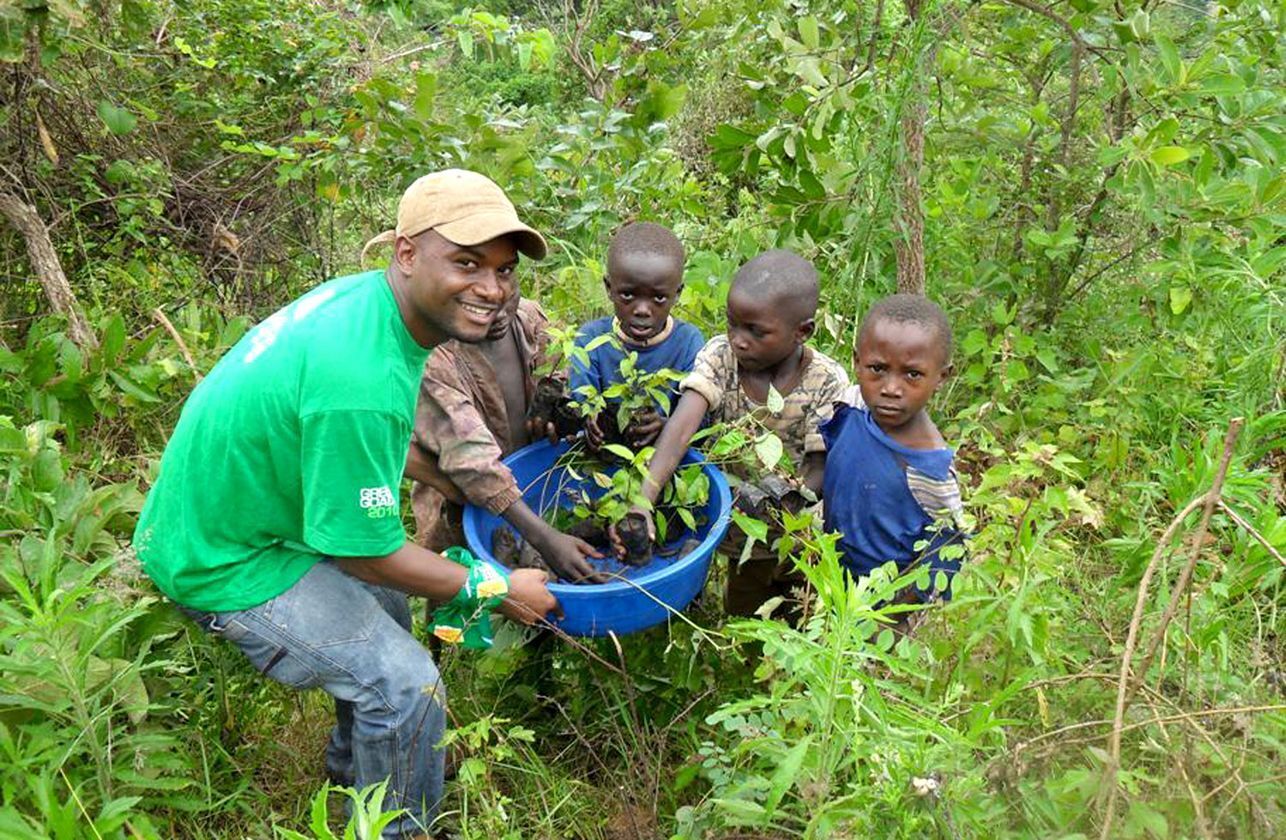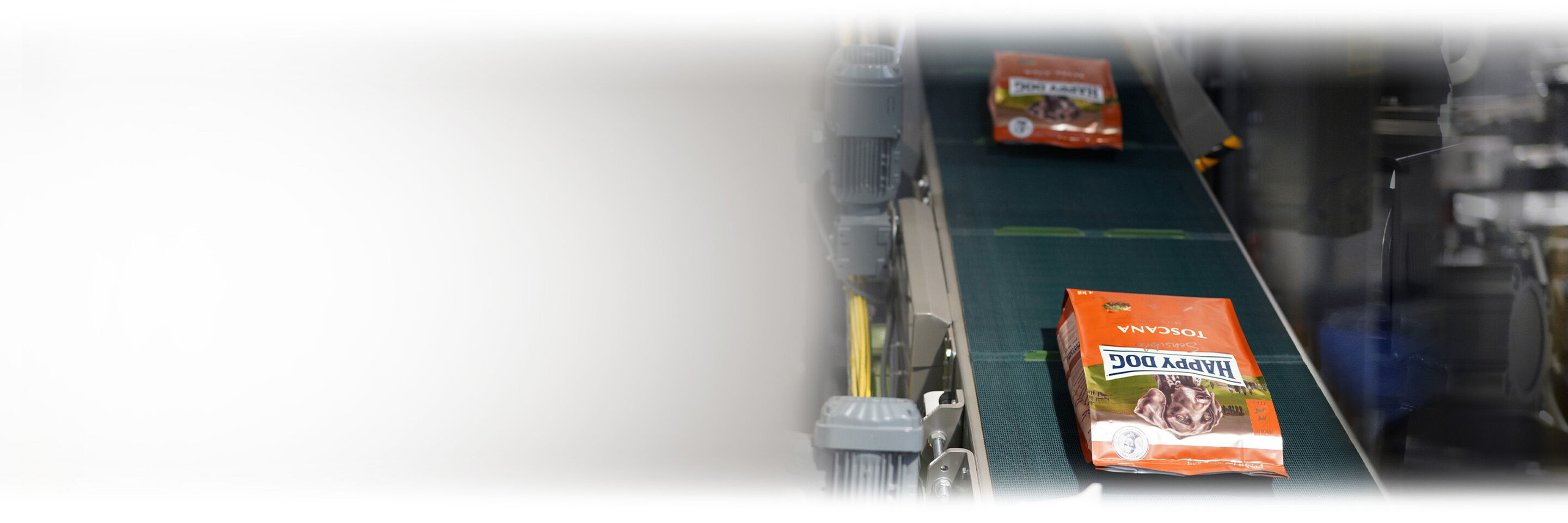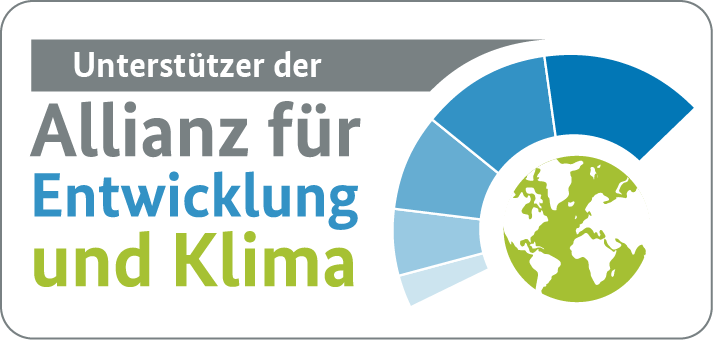Over the last few years we have invested around 500,000 euros in energy-saving measures and are proud of what we have achieved to date. And in the coming years we will continue to aim high to increase sustainability throughout the company. Because ultimately, it makes much more sense to reduce our CO2 emissions than to offset them. We are working on this.
Our Wehringen plant with connected office building:
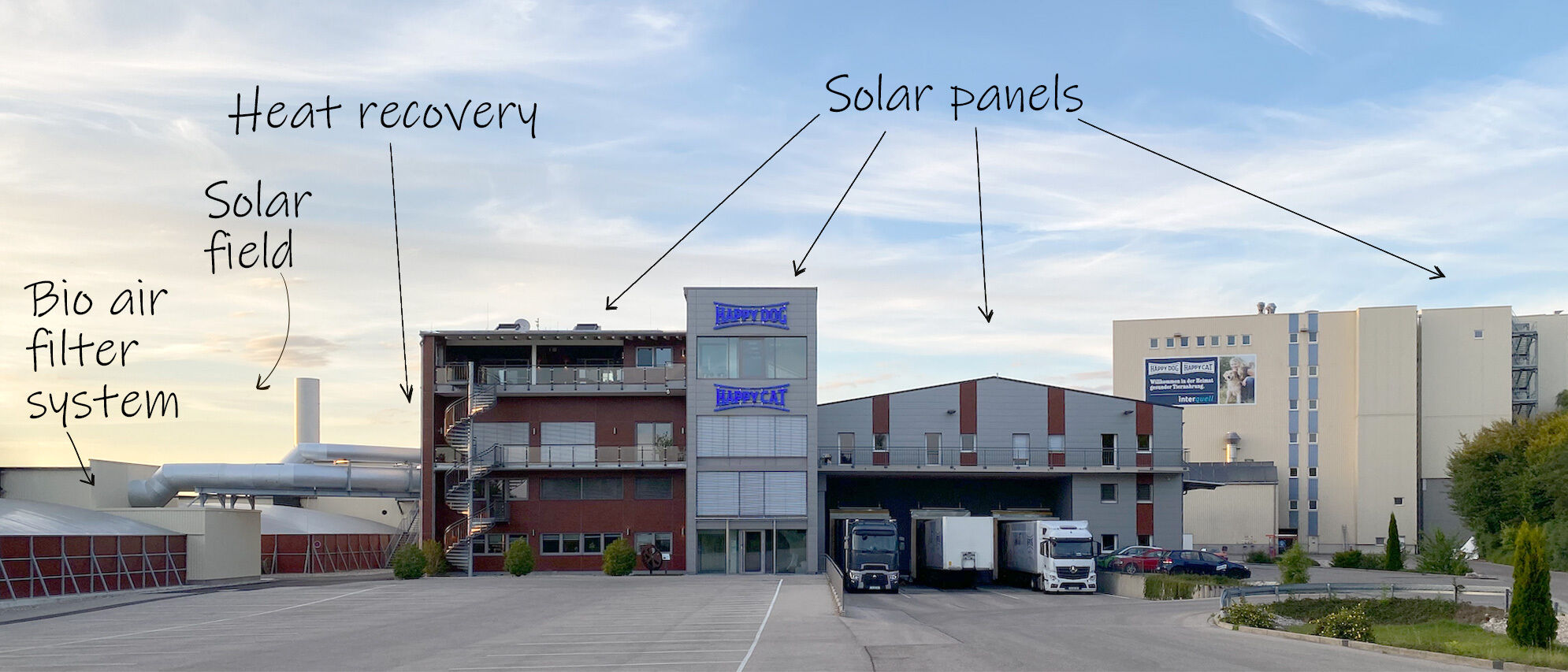
For a CO2-neutral company...
... we prefer to reduce our energy consumption rather than offset it
Modern production equipment
Efficient feed production
Sparing use of energy
We rely on modern, gentle manufacturing methods and are reducing our environmental footprint. Our new production facilities run efficiently and are climate-friendly. As a result, we save water and energy. Already we are able to save 10% energy per kilogram of pet food produced, and the trend is upwards.
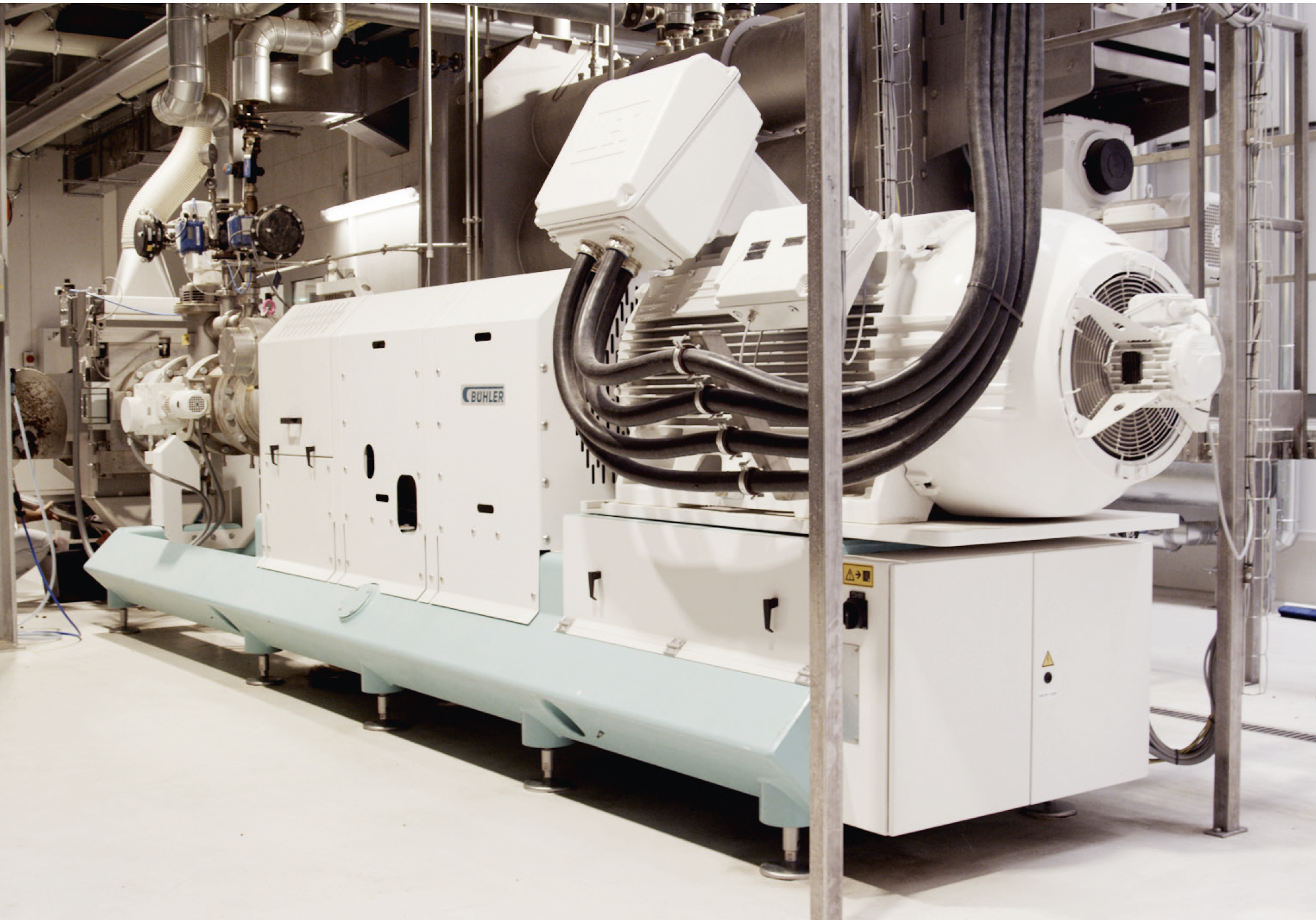
All online orders
Climate-neutral shipping
Climate-friendly with GoGreen from DHL
We use Deutsche Post’s climate-neutral parcel service for all orders from our online shop, and so participate in Deutsche Post DHL’s GOGREEN initiative. So you can now order food for your pet at happydog.de in all good conscience.
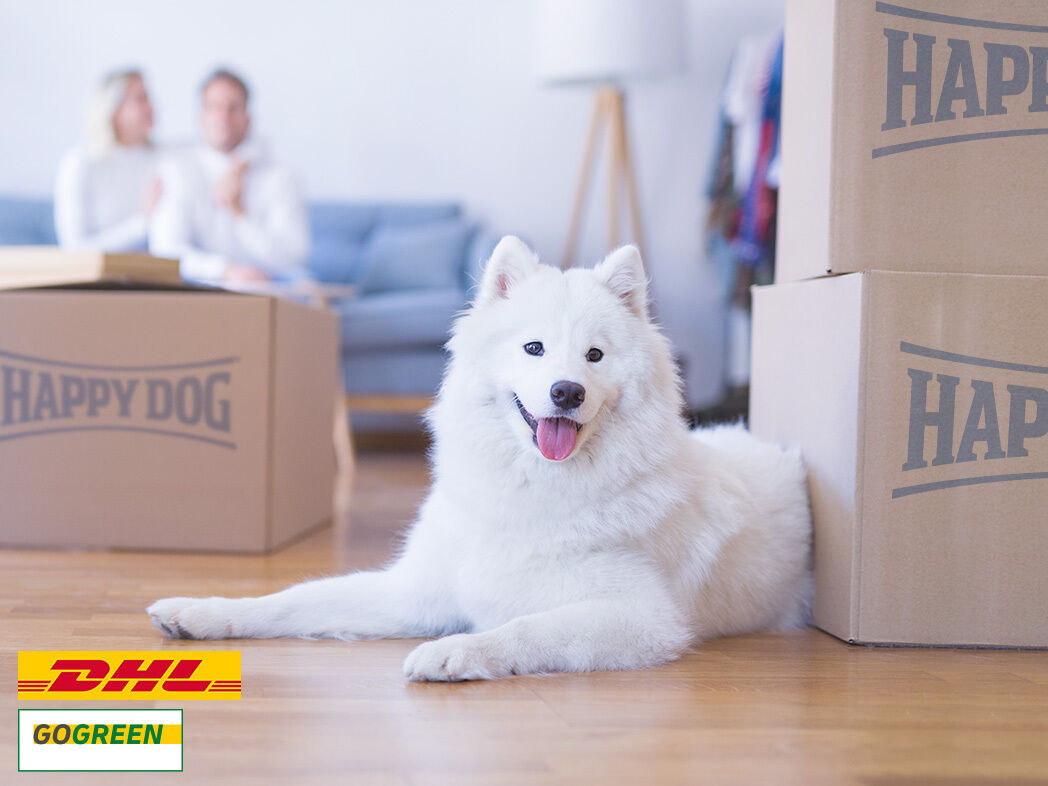
We support climate protection projects...
... to allow effective commitment to sustainability
Despite all our energy-saving measures, there is still a small part of our CO2 output remaining that we cannot reduce any further. To offset this, we support two climate protection projects run by our partner, myclimate.de
CO2 offsetting
Climate protection projects
With myclimate
To offset our CO2 emissions, we participate in climate protection projects run by our partner, myclimate. These enable us to commit effectively to sustainability and climate protection.
We support reforestation projects in Uganda; the small-scale farmers help to plant the trees and manage the existing woodlands better. This creates the basis for long-term and sustainable use of the land.
We support reforestation projects in Uganda; the small-scale farmers help to plant the trees and manage the existing woodlands better. This creates the basis for long-term and sustainable use of the land.
